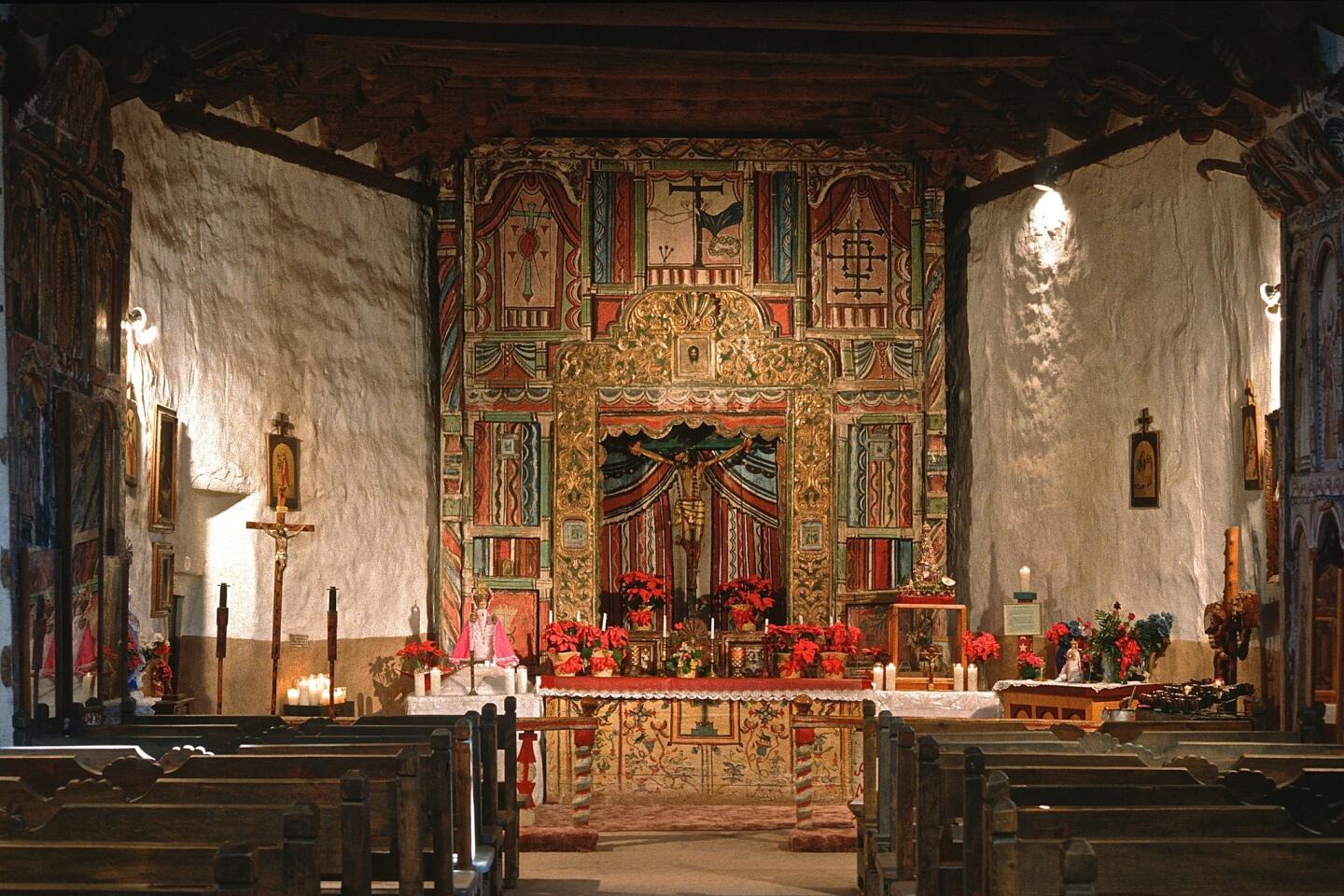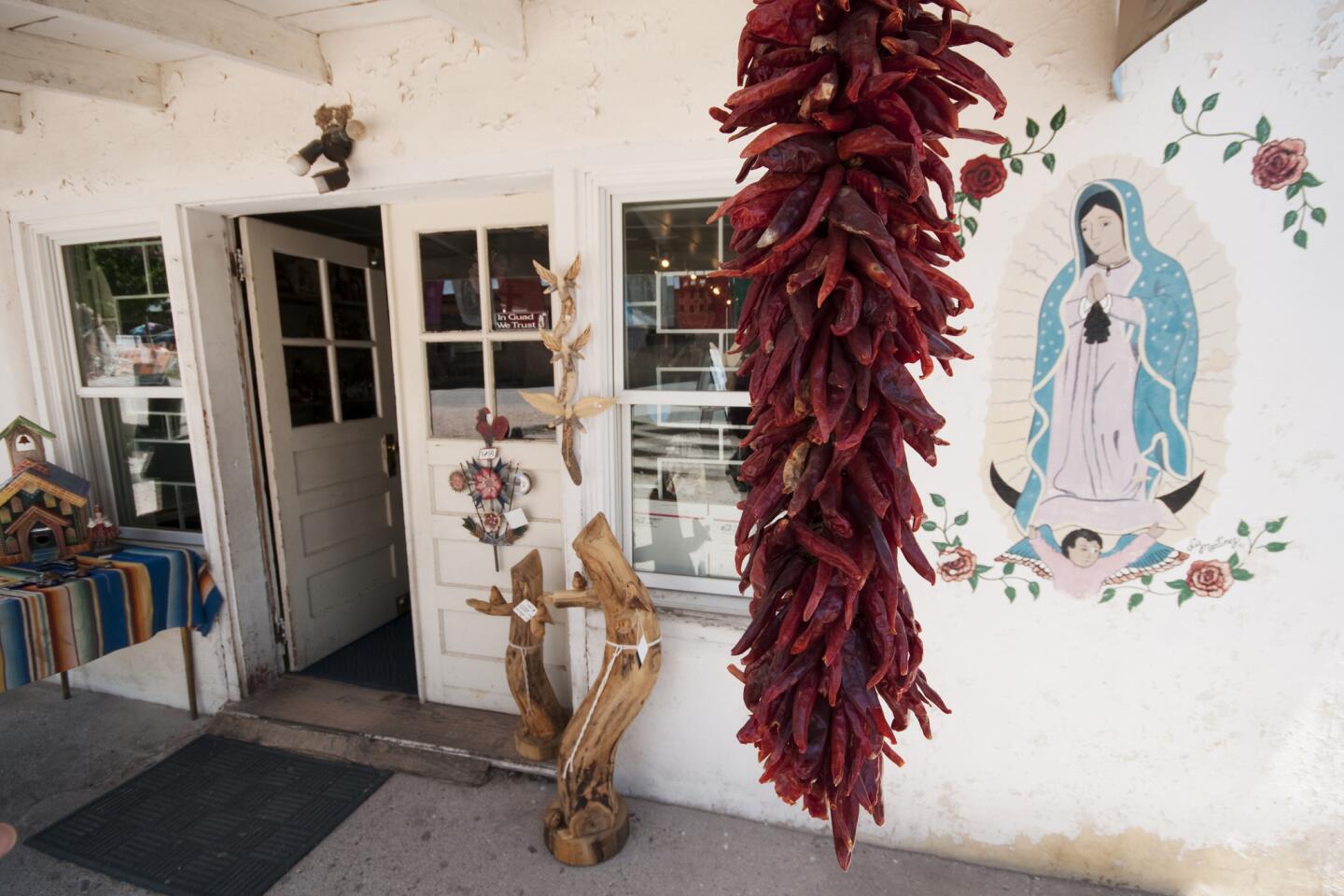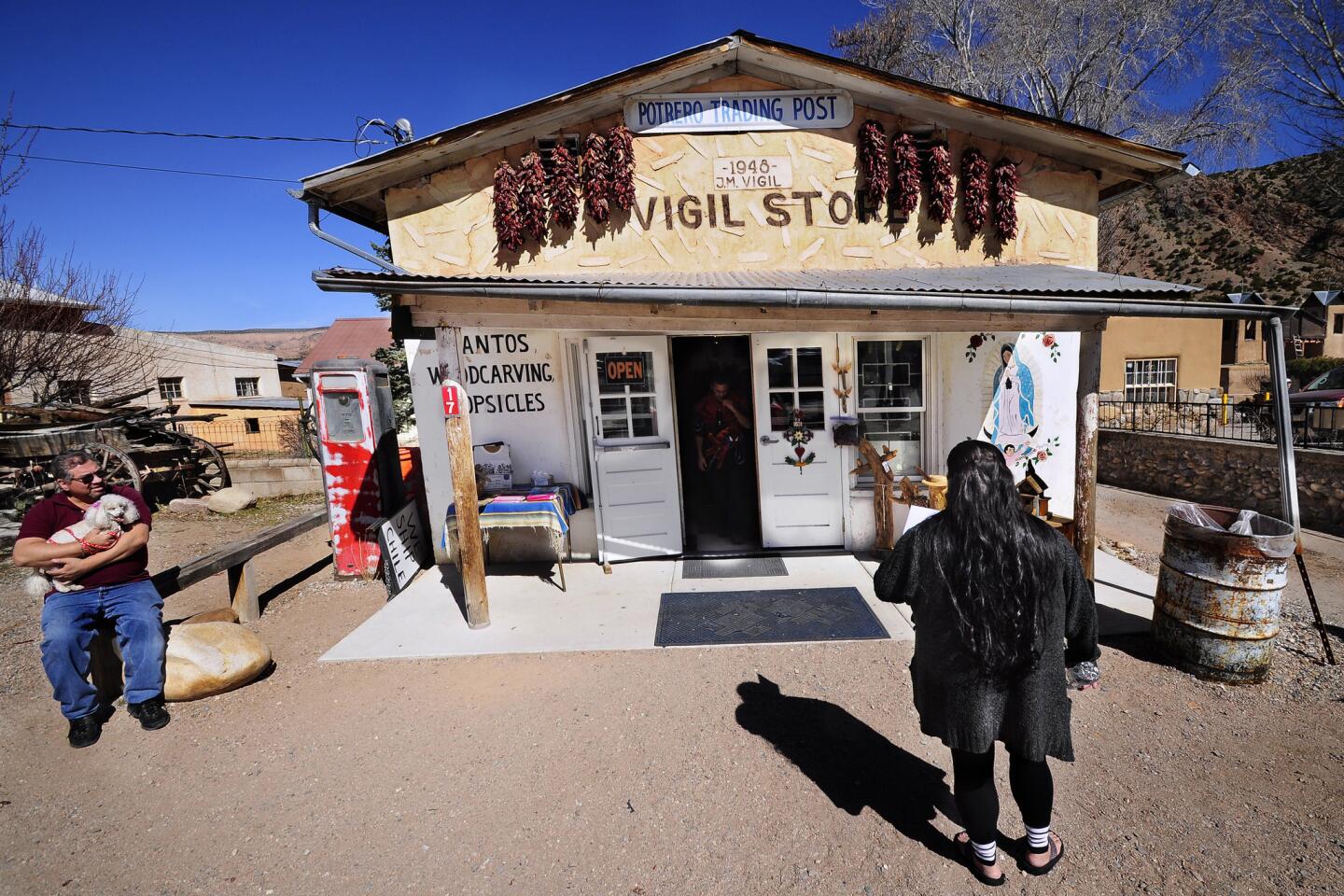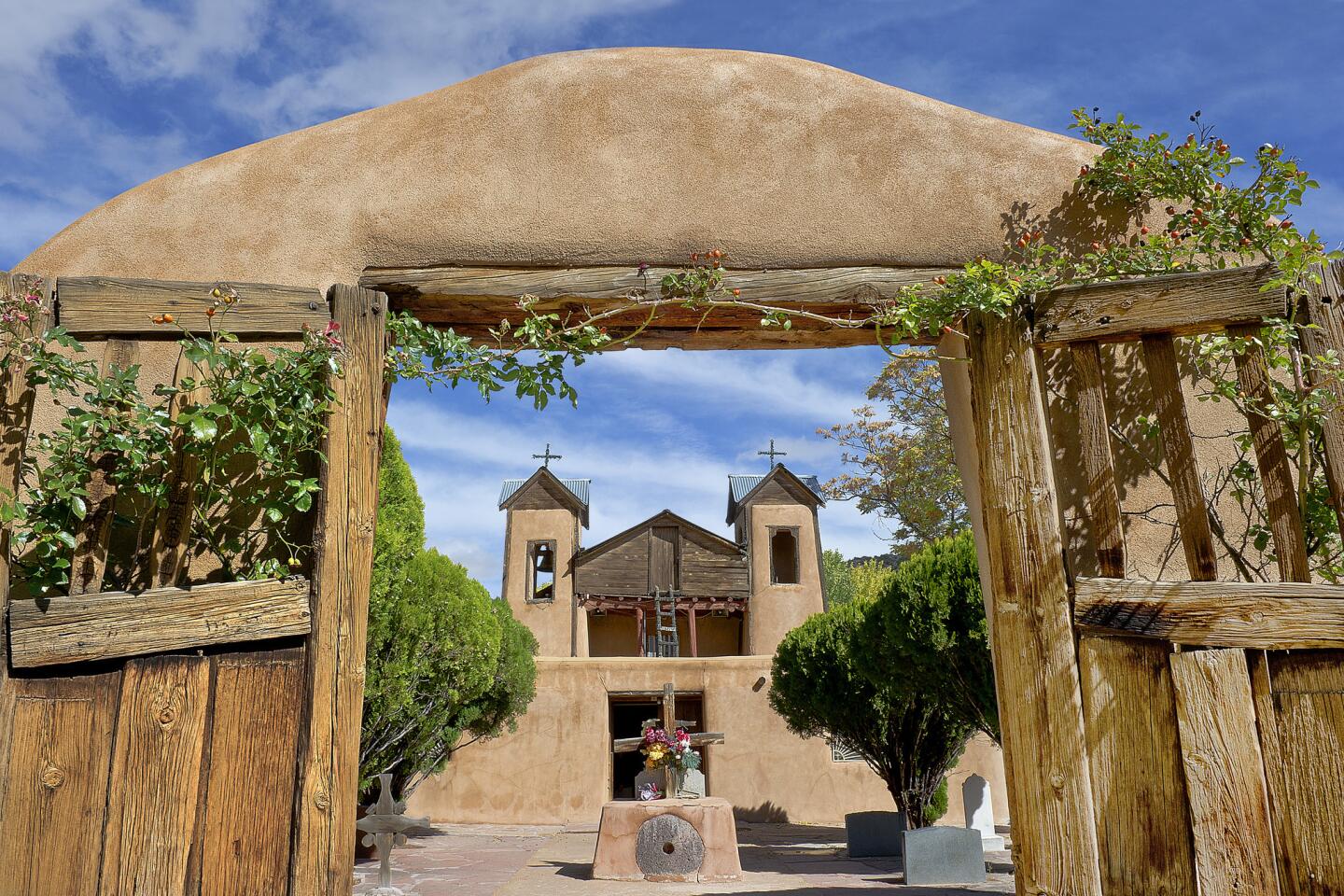Red or green? Your answer speaks volumes about you in New Mexico
Reporting from Santa Fe, N.M. — Ask anyone from New Mexico what autumn smells like. It’s not burning leaves, freshly harvested grapes or simmering hot apple cider. It’s a distinctive regional aroma of roasted chiles — a smoky, piquant perfume that pervades backyards, parking lots and even grocery stores during the season.
That distinctive aroma, prevalent from mid-August to early October, kicks off a year of sustenance for New Mexicans.
“Red or green?” is the “official state question,” and the color of your chile preference will reveal your roots as a northerner or a southerner in the state.
I set out to answer this question through the eyes of an unbiased New Yorker, hitting New Mexico’s two chile hubs: the Hatch Valley outside Las Cruces in the south, and Chimayó in the north.
Going green
My first stop: New Mexico State University’s Chile Pepper Institute in Las Cruces is devoted to the education and research on one of the state’s chief crops.
Among the things I learned while taking a guided tour of the garden, which exhibits 150 chile peppers from 34 countries: In New Mexico, it’s spelled chile with an “e,” not an “i.” The former refers to the pepper, the latter the meat and bean dish.
It is a fruit, not a vegetable. It is also a sauce, an entire cuisine and a local obsession.
Las Cruces also happens to be the home of the 47-foot cement “World’s Largest Chile Pepper,” a goofy photo op in front of the Big Chile Inn.
Downtown’s revitalization is best represented on Main Street, where an illuminated chile drops on Dec. 31 to usher in the New Year.
On Wednesdays and Saturdays, the strip becomes the center of the farmers and crafts markets, where shoppers can pick up used books, handmade jewelry, produce and sacks of chiles in season.
New art galleries and boutiques dot the street along with just-opened restaurants such as sustainably driven Dragonfly.
Las Cruces was a great start for a chile education, but I couldn’t wait to get to Hatch, the self-proclaimed “chile capital of the world,” 40 miles north, where verdant pepper fields stretched for miles, and ristras, strings of dried red chiles, decorated storefronts, rooftops and porches of homes.
Hatch hops during Labor Day weekend, when it hosts an annual chile festival that draws 30,000. It was here that I truly understood how chile in these parts has risen above an edible to become a cultural mascot and a lifeblood.
The chiles, long and pale green with names such as Sandia and Big Jim, weren’t plump and tasteless like a bell nor diminutive and one-dimensional like the jalapeño.
Hatch green chiles have a flat, sharp heat with a vegetal flavor and meaty texture that cottons to roasting like a steak to a grill.
They also take well to freezing, jarring and canning. When freshly roasted, then sprinkled with a little salt or garlic powder, they are superb.
At the festival, I asked Nate Cotanch, founder of Zia Green Chile Co., what makes these chiles so special.
“The climate. The air. The loamy soil. The altitude. Cold nights, hot days. The water from the Rio Grande,” he said, explaining that it was a culmination of it all.
Cotanch, whose roots stretch back generations in New Mexico, went on to share an even greater significance.
“To me, it’s about family gathering around the roaster and marking the year’s bounty,” he said. “It’s a part of who we are, down to celebrating Thanksgiving with green chile apple pies.”
You don’t have to attend the festival to sample green chile in Hatch. It’s everywhere and in everything all year.
At Sparky’s, a line snakes outside the door for cheeseburgers oozing with queso and dotted with chunks of the green stuff. I washed one down with a green chile milkshake.
Though people come for that burger, which won first prize at the 2017 New Mexico State Fair Green Chile Cheeseburger Challenge, they stay for the live music and the restaurant’s quirky collection of roadside statues.
My other favorite culinary experience in Hatch was at B&E Burritos, a humble one-story house with a truck-stop feel, serving a simple but exquisite green chile pork burrito, mingling mild spice with the textural pop of cubed potatoes in a warm, soft tortilla.
It made such an impression that I had to go back for more.
Seeing red
The flavor of that sublime burrito lingered as I made my way 275 miles north to the village of Chimayó, the chile capital of the region. Red chile dominates the landscape and the kitchens here; the cooler clime causes them to ripen more quickly than in Hatch.
Locals practically swoon when they speak of the magic powers of the coveted Chimayó red pepper. It is grown primarily for personal, not commercial, use and is priced at more than $40 a pound.
The journey turned out to be a true pilgrimage: Chimayó is also the site of the Santuario de Chimayó, a holy destination that draws more than 30,000 religious pilgrims on Easter alone. The crucifix of Our Lord of Esquipulas was found here in 1810, and the pocito room in the adobe church holds miraculous holy soil said to possess healing powers.
Right outside its gates was my real destination, El Potrero Trading Post. The family-run shop, opened in 1921, also sells religious artifacts, art and antiques.
I bypassed the other wares to score the ground heirloom Chimayó chile and walked away with 4 ounces for $11.25.
Back in the car, I stuck a finger into the red-orange powder and tasted it. I already could tell why it was so special — tart and citrusy with a slow burn. I could envision the magic it would add to tomato sauce or beef stew.
Cooking lessons
The next morning I woke determined to learn how best to put Chimayó chile powder to use, so I headed 40 miles south to the Santa Fe School of Cooking, where I attended a demonstration class on Southwestern cuisine.
The air was thick with spice as we watched the instructor make a proper New Mexican chile paste. The school also offers hands-on classes, including a red chile workshop, a green chile workshop and one on cooking inspired by Georgia O’ Keeffe, fitting because the museum devoted to her is down the block.
Santa Fe Art Tours offers a chance to get creative with chile. Its Farm to Canvas Tour leads guests through the galleries of the Railyard Arts District, then to the equally inspiring Santa Fe Farmers Market to pick up produce, including chiles, for printmaking.
The tour concludes with a workshop where guests make their own food-inspired art.
I wondered if scorching-hot chiles, said to bring on hallucinations, inspired one of Santa Fe’s must-see art attractions. Mind-trippy Meow Wolf, created by more than 100 artists, offers a portal into the fantastical world of interactive art with 70 rooms that encompass a treehouse, laser-based musical instruments and a psychedelic “magic bus” ride.
I reflected on the exhibit at Tomasita’s Restaurant, in the former train depot in the Railyard District. I nearly hallucinated from happiness upon tasting the bright and smoky red chile sauce that smothered my enchiladas.
I asked manager Ignatios Patsalis about the sauce, and he let me peek in the kitchen to see how it was made.
“Hatch grows chiles. We cook them,” he said as we walked through the swinging doors.
After that meal, I felt as though chile was part of my blood.
These spice-tinged travels gave me the answer to the red or green question: both.
If you go
THE BEST WAY TO SANTA FE, N.M.
From LAX, Southwest, United, American and Delta offer nonstop service to Albuquerque, N.M. Southwest offers direct service (stop, no change of plane), and American, Southwest, Delta, United and Frontier offer connecting service (change of planes). Restricted round-trip airfare from $220, including taxes and fees. Santa Fe is a one-hour drive from Albuquerque.
WHERE TO STAY
Hotel Encanto, 705 S. Telshor Blvd., Las Cruces; [866] 383-0443. Features a Spanish Colonial design and a lounge, Azul, where bartenders work up a chile-induced sweat with concoctions such as the Prickly Bloody Mary, featuring vodka, green chile purée and prickly pear hot sauce. Doubles from $119.
Rancho de Chimayó Hacienda, 297 Juan Medina Road, Chimayó; (888) 270-2320. A 100-year-old adobe building with seven guest rooms. In 2016 its restaurant received an America’s Classics Award by the James Beard Foundation. Doubles from $79.
Hilton Santa Fe Historic Plaza, 100 Sandoval St., Santa Fe; (505) 988-2811. Prime location in the city center. Doubles from $139.
WHERE TO EAT AND DRINK
Dragonfly, 139 N. Main St., Las Cruces; (575) 353-9866, dragonflylc.com. Serves New Mexican mac ’n’ cheese with diced local chile.
B&E Burrito, 303 N. Franklin St., Hatch; (505) 267-5191). Poses the question “green or red?” in terms of burritos. Either is the correct answer.
Sparky’s, 115 Franklin St., Hatch; (575) 267-4222. Worth a visit for its kitsch factor, live music and award-winning green chile cheeseburger.
Tomasita’s, 500 S. Guadalupe St., Santa Fe; (505) 983-5721. In business for more than 40 years, the restaurant uses 80,000 pounds of green chile and 12,000 pounds of red chile annually.
TO LEARN MORE
Las Cruces Convention & Visitors Bureau
More to Read
Sign up for The Wild
We’ll help you find the best places to hike, bike and run, as well as the perfect silent spots for meditation and yoga.
You may occasionally receive promotional content from the Los Angeles Times.










